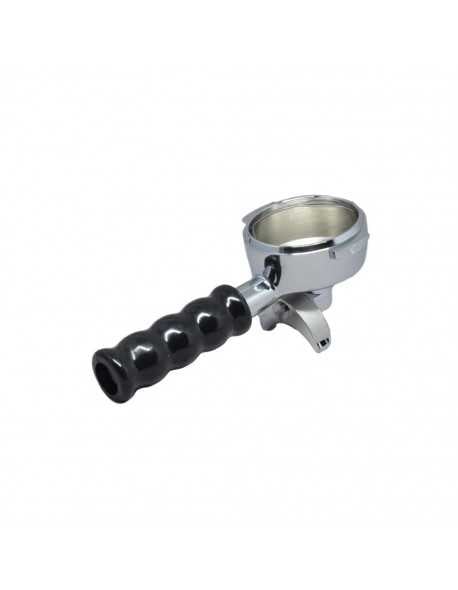





€59.70 tax excl.
 Security policy
Security policy
(edit with the Customer Reassurance module)
 Delivery policy
Delivery policy
(edit with the Customer Reassurance module)
 Return policy
Return policy
(edit with the Customer Reassurance module)
The portafilter on this product page is maybe one of the most iconic portafilters ever made, the Faema e61 portafilter. What makes the Faema E61 portafilter so unique? That is the style of handle. The portafilter body is slightly different then the original.
This model is fitted with a double coffee spout, and comes with a stainless steel filter basket spring. The portafilter does not come with a double filter basket.
You can not use this portafilter on the Faema E61 Legend and Faema E61 Jubilee, for these espresso machines we do have a different 1 coffee portafilter and 2 coffee portafilter on the website.
No you can’t. even if you have a Cimbali double portafilter which is suitable for instance Cimbali brewing groups, this would not mean that it will fit. Seen Cimbali also uses on some of their models a Faema type of brewing group. On our blog post you can find more information about this: Portafilter models and types
In most cases the double spouts use a 3/8” BSP-G thread, but some portafilters also use a metric M16 spout. For the complete overview check out our portafilter spout product page.
Well this is quite easy. Remove the filterbasket, this can be done with a IMS removal tool. Then put your portafilter body into a container with puly caff and let it soak for a while. Prevent that the handle is in contact with water. You can clean the double spout with a round Brooks cleaning brush.
Well that answer is pretty simple, no it isn’t. The original valve works as following, when you turn the shaft inwards the valve pin will push a gasket holder. The steam can go out, close it again and no steam can go out. In the case of the modern E61 valves is that behind the gasket holder is a small stainless steel ball with a spring.
From the beginning of the Faema E61 brewing group are basically no differences between the parts installed inside the brewing group. Parts such as the valve gaskets, springs, valve assemblies and portafilters have all remained the same. The biggest change is the small cleaning hole on the front of the brewing group. With the earliest models this hole didn´t exist.
There are 5 types of boiler used on the Faema E61 espresso machine. The most well known is the double flanged model. You have on one side the heating element flange and on the other side the water level flange, both are out of production. These are held in place with aluminium boiler rings. For the single groups you have a boiler with a flange on one side.
The next model is a stainless steel boiler, with one flange. This type of boiler is less common then the copper boiler above. There is also a later model stainless steel, which doesn’t have a removable flange. Both these boilers have corrosion issues, this has to do because of the stainless steel.
The latest model is also a copper boiler, this boiler has a single heat exchanger(HX) in the middle. Most modern espresso machines have for each individual brewing group a individual HX.
Yes it is, but this depends on various factors. The first thing is experience, seen this is a manual operated espresso machine it requires a lot more attention from the barista then a solenoid operated model. There you need to stop the brewing process manually. If you don’t have the experience you probably can’t hold up with the tempo which is required at such a bar. Then I would advice to go for the Faema E61 Jubilee, this is the solenoid operated version of the Faema E61 Legend espresso machine.